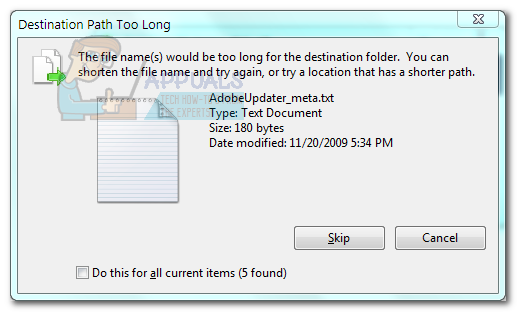

- #Where shuld be copy long path tool how to#
- #Where shuld be copy long path tool full#
- #Where shuld be copy long path tool pro#
#Where shuld be copy long path tool how to#
RELATED: How to Make Your Own Windows Registry Hacks Double-click the one you want to use, click through the prompts, and then restart your computer. Both are included in the following ZIP file. One hack removes the 260 character path limit and the other hack restores the default limit. If you don’t feel like diving into the Registry yourself, we’ve created two downloadable registry hacks you can use. If you ever want to reverse the changes, just head back to the LongPathsEnabled value and set it from 1 back to 0. You can now close Registry Editor and restart your computer (or sign out of your account and sign back on). In the value’s properties window, change the value from 0 to 1 in the “Value data” box and then click OK. If you don’t see the value listed, you’ll need to create it by right-clicking the FileSystem key, choosing New > DWORD (32-bit) Value, and then naming the new value LongPathsEnabled. On the right, find a value named LongPathsEnabled and double-click it. In the Registry Editor, use the left sidebar to navigate to the following key: HKEY_LOCAL_MACHINE\SYSTEM\CurrentControlSet\Control\FileSystem To get started, open the Registry Editor by hitting Start and typing “regedit.” Press Enter to open Registry Editor and give it permission to make changes to your PC. And definitely back up the Registry (and your computer!) before making changes. That said, if you’ve never worked with it before, consider reading about how to use the Registry Editor before you get started. This is a pretty simple hack and as long as you stick to the instructions, you shouldn’t have any problems. Standard warning: Registry Editor is a powerful tool and misusing it can render your system unstable or even inoperable.
#Where shuld be copy long path tool pro#
RELATED: Learning to Use the Registry Editor Like a Pro (If you have Pro or Enterprise, though, we recommend using the easier Group Policy Editor, as described in the next section.) You can also do it this way if you have Windows Pro or Enterprise, but feel more comfortable working in the Registry than Group Policy Editor.

If you have a Windows Home edition, you will have to edit the Windows Registry to make these changes. Home Users: Remove the 260 Character Path Limit by Editing the Registry
#Where shuld be copy long path tool full#
If an application doesn’t work, the only thing that will happen is that it won’t be able to open or save files that are saved in places where the full path exceeds 260 characters. Still, you don’t risk anything by trying the setting out. Most popular 32-bit apps should experience no problem. Older 32-bit applications need to be manifested in order to work, which really just means that the developer has indicated in the application’s manifest file that the application supports longer paths. Specifically, any modern applications should be fine, as should all 64-bit applications. This new setting won’t necessarily work with every application out there, but it will work with most.


 0 kommentar(er)
0 kommentar(er)
